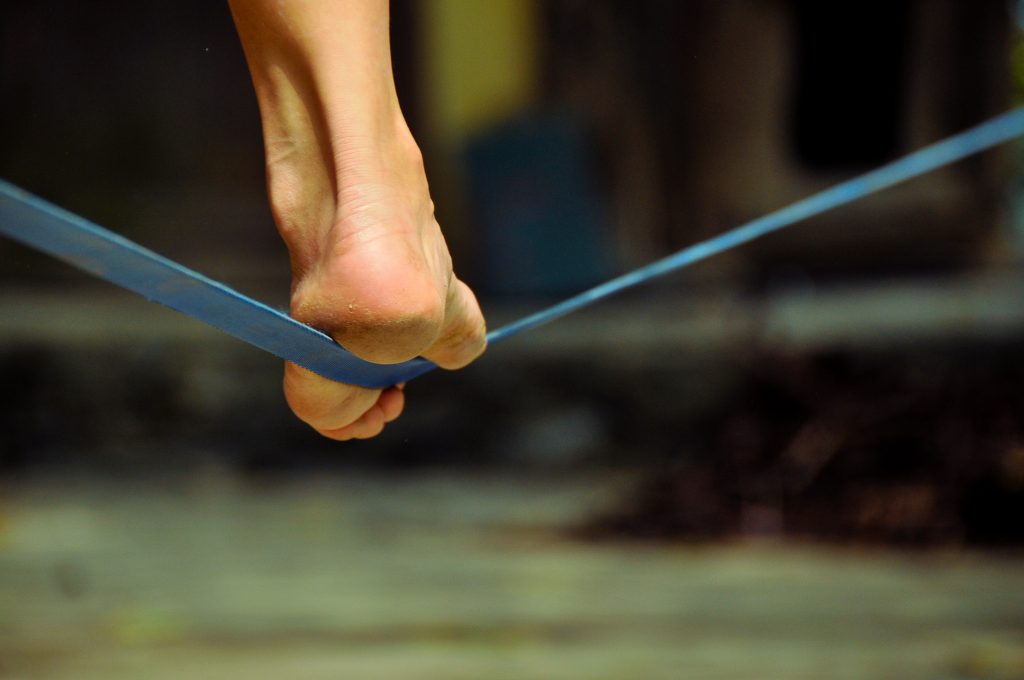 In the Practice Makes Perfect blog, guest writer Barry Moltz wrote Work – Life Balance? Nonsense! about the artificial split between work and life. His basic suggestions is that in the age of the iPhone (or, in my case a Nokia E71) classical tips such as “never take work home” are no longer applicable.
In the Practice Makes Perfect blog, guest writer Barry Moltz wrote Work – Life Balance? Nonsense! about the artificial split between work and life. His basic suggestions is that in the age of the iPhone (or, in my case a Nokia E71) classical tips such as “never take work home” are no longer applicable.
Work-Life Balance is a failed term. It suggests that work is somehow not a part of life and we need to get some form of balance between these two concepts. That’s old dualistic thinking at its worst. We need to recognise that work is an important part of life, but just a part. What we need is to find a fluid and dynamic balance between the different parts, so that life is enriched and enriching.
From Barry’s article:
Way #1.Work as long as hard as you want during the day. Get to work early, leave late, but when you go home, leave your work at work.
Obviously, the author of Way #1 has never met my iPhone. We live in a 24/7 world. Get used to it.
One of my former bosses used to practice this pretty well; then again, few people had mobile phones in those days. A statement like Way #1 can push buttons – it’s useful to pause for a moment and reflect which ones. It may give you a hint about some aspect of life that is not getting enough attention right now.
Over time, for well-being and health, we need to ensure we pay attention to different facets of our lives. More iPerson and less iPhone. The level of attention will change from month to month, day to day, moment to moment, depending what is going on. A basic collection of facets looks like this:
- work
- primary relationship
- kids
- family of origin
- friends
- social
- hobbies
- self
As I wrote the list, I imagined some people thinking, “oh no! Even more things I need to schedule or put on my ToDo list!” It doesn’t have to be like that. In a given phase of life the relative importance between these facets changes. Not all will be present in any given week. It’s when they’re not present, week after week, that our well-being suffers.
“Only connect” is not the answer. Neither is regimenting life strictly. Many self-organization systems like Getting Things Done recommend a once-per-week review of all ToDos and projects in life. I wouldn’t suggest turning my partner, family, friends, hobbies and self into a project. It is worth spending a few minutes during the review to notice if you’re satisfied with the level of attention each has received in the past week. If, over time, the answer is “no”, it’s a sign you’re drifting from your balance point.
The reasons for drift are often linked to our personality structures. For example, in Enneagram terms, many Type Three’s focus on success at work, and the other facets suffer. Often, Type Two’s focus on the relationships in their lives (relationship, family, friends). Many One’s tell me they’re driven by a sense of duty to ensure that all tasks (work and home) are done, so any left-over time can be used for hobbies and self (not that there ever is left-over time!). Sometimes, Types Six or Eight focus on social justice, often at the cost work and family. And we Type Nines just sometimes forget to focus at all.
It’s important just to notice the drift – this may be enough to get back on track. Remembering to say “no” more often in certain areas of life may be needed. Or maybe you could benefit from a couple of hours with a coach.
What helps you keep your life balance?

![Reblog this post [with Zemanta]](http://img.zemanta.com/reblog_e.png?x-id=5d2c2a50-c787-45d4-8b62-128b6aa47782)
[…] original here: One more time: Why Work-Life Balance isn’t healthy addthis_url = […]
We are not machines yet many of the “systems” proposed for fixing the so called work-life balance problem are very mechanistic or as you suggest regimented in nature – like do these 10 steps. For me it all comes down to making choices with a focus on integration, connection & creating ease wherever and whenever possible. When any one of those things is missing it’s time to take a look at some aspect of my life and make some different choices. I don’t think this is ever something I will have completely handled. Stuff happens so once in a while I get thrown off the horse so to speak. The only thing to do then is find a way to climb back on.
More iPerson and less iPhone. I like that! The casualty of our pace and electronic connectedness is all too often the far more potent, satisfying and essential connection of human touch.
Thanks for your thoughtful reply, Susan. What you describe mirrors a problem I often encounter in leadership development: people are looking for recipe answers – and receive them in books or many trainings. At some stage, they begin to realize that life is not mastered through a recipe or mechanistic approach. Some even begin to realize that life is there for mastering, that we all get surprised from time-to-time: Some days, we are given a random set of ingredients without a recipe or cookbook in sight. And we still need to cook for ourselves and others. In that moment we have an opportunity to taste life. Our response to such moments defines our leadership.